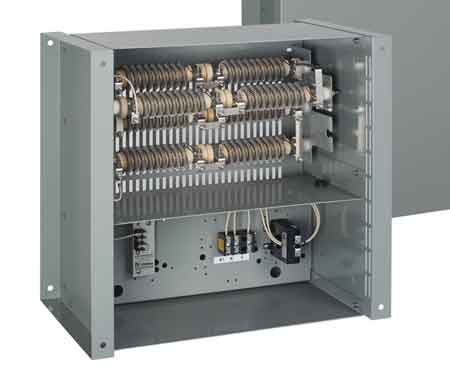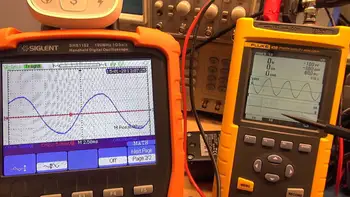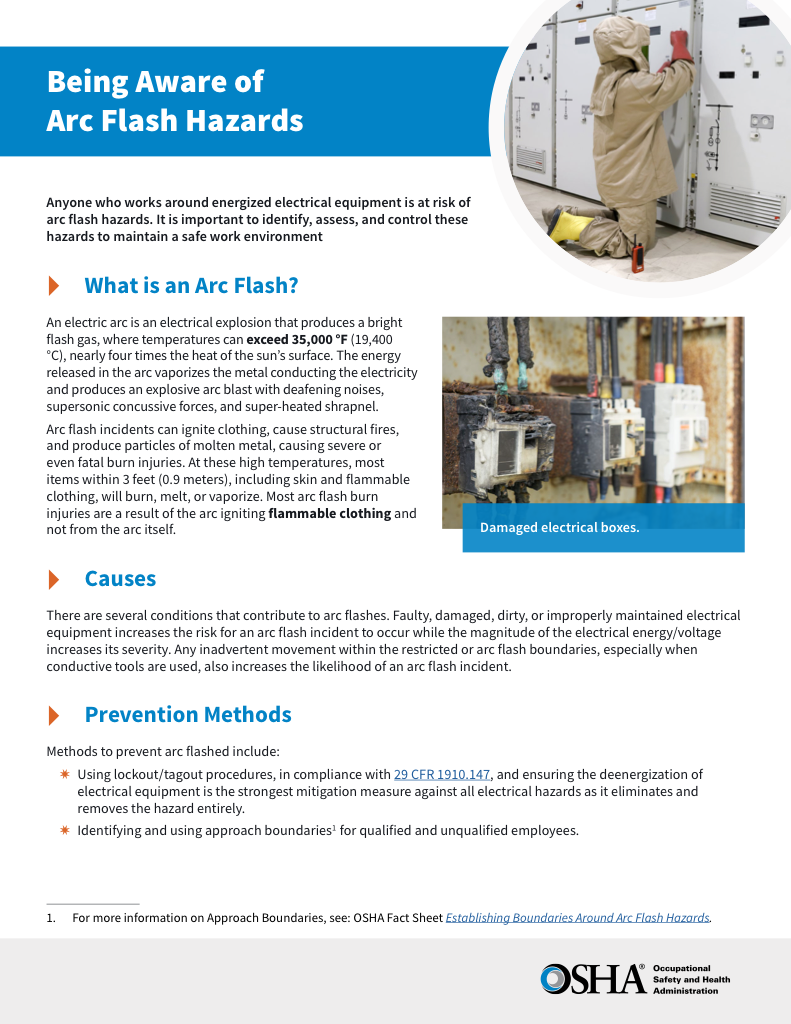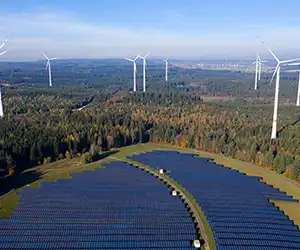Neutral Grounding Resistor

Power Quality Analysis Training
Our customized live online or in‑person group training can be delivered to your staff at your location.

- Live Online
- 12 hours Instructor-led
- Group Training Available
Download Our OSHA 4475 Fact Sheet – Being Aware of Arc Flash Hazards

- Identify root causes of arc flash incidents and contributing conditions
- Apply prevention strategies including LOTO, PPE, and testing protocols
- Understand OSHA requirements for training and equipment maintenance
A neutral grounding resistor (NGR) limits fault current during ground faults in medium-voltage systems. It enhances system protection, prevents equipment damage, and improves safety by controlling transient overvoltages and maintaining the stability of the grounding system.
What is a Neutral Grounding Resistor?
A neutral grounding resistor (NGR) is a crucial component in industrial power systems, designed to enhance safety and reliability by limiting fault currents in electrical networks.
✅ Limits ground fault current to protect transformers and generators
✅ Enhances personnel and equipment safety in fault conditions
✅ Controls transient overvoltage and supports system reliability
Power Quality Analysis Training
Request a Free Power Quality Training Quotation
It connects the system neutral to the ground, controlling the magnitude of ground fault currents during electrical faults. This control reduces damage to equipment, minimizes system downtime, and ensures personnel safety by mitigating the risks of arc flashes or electrical fires. Neutral grounding resistors play a crucial role in maintaining the stability of industrial power systems, making them indispensable for industries that prioritize operational efficiency and safety. To understand how NGRs improve overall system performance, refer to our power quality section for insights on stability and reliability in industrial power systems.
In-Depth Definitions and Applications
The primary purpose of an NGR is to limit fault current during line-to-ground faults to protect equipment and enhance safety and system stability. Without a resistor in place, ground faults can lead to dangerously high currents, equipment failures, and serious safety hazards.
Application areas include:
-
Industrial plants, where continuity of production is critical
-
Utility substations, to protect transformers and switchgear
-
Mining, where hazardous environments require careful current control
-
Renewable energy systems such as wind farms and solar plants, to safeguard grid integration
FREE EF Electrical Training Catalog
Download our FREE Electrical Training Catalog and explore a full range of expert-led electrical training courses.

- Live online and in-person courses available
- Real-time instruction with Q&A from industry experts
- Flexible scheduling for your convenience
Limiting Fault Currents for Safety
The primary function of a neutral grounding resistor is to limit the fault current flowing through the system during a line-to-ground fault. By connecting the neutral point of a generator or transformer to the ground through the resistor, the NGR controls the flow of fault current to a safer level. This not only minimizes potential damage to electrical equipment but also enhances personnel safety. The use of an NGR enables industrial operations to strike a balance between system protection and fault current management, ensuring smoother and continuous operation even in the presence of faults. Because NGRs are a key part of a safe and effective electrical grounding system, their proper installation ensures fault currents are directed safely to earth.
Types of Grounding Systems
Neutral grounding resistors are one method among several grounding strategies:
-
Low-resistance grounding – limits fault current to higher values (hundreds of amps). This is common in large industrial systems where quick fault clearing is needed.
-
High-resistance grounding (HRG) – keeps fault current very low (often <25 A), allowing systems to continue operating during a single ground fault.
-
Solid grounding – directly connects the neutral to earth, allowing high fault currents. While simple, it increases the risk of arc flash and equipment stress compared to resistor grounding.
Benefits of Neutral Grounding Resistor Implementation
One of the significant advantages of using NGRs is their ability to reduce mechanical and thermal stresses on conductors during a fault condition. Additionally, NGRs help maintain the operational integrity of high-value electrical equipment.
Key advantages include:
-
Limiting arc flash risk and transient overvoltages
-
Enhancing fault detection, uptime, and system reliability
-
Protecting generators, transformers and minimizing maintenance costs
For foundational knowledge on safe grounding design, see our article on electrical grounding and bonding, with a focus on compliance with CSA and NEC codes.
Robust Design and Construction
NGRs are specifically designed to meet the demands of power systems across various industrial applications. Constructed with materials like stainless steel, they are engineered to withstand the extreme conditions brought about by electrical faults. Commonly, NGRs employ high-resistance or edge-wound designs, which allow them to dissipate heat efficiently while maintaining durability. This construction is particularly advantageous in sectors such as mining, where equipment must operate under intense stresses and where fault conditions are more likely to occur.
Technical Specifications and Functional Role of Neutral Grounding Resistors
| Parameter | Technical Detail / Description |
|---|---|
| System Voltage Rating | Typically 600 V to 15 kV (medium-voltage systems) |
| Ground Fault Current Limit | Commonly 10 A to 400 A (adjusted to match system protection needs) |
| Resistance Value (Ohms) | Calculated using Ohm’s Law: R = V / I, where V = line-to-neutral voltage and I = desired fault current |
| Time Rating | Typically 10 seconds (short time rating) to 10 minutes (extended faults), depending on system design |
| Resistor Material | Stainless steel, nickel-chromium alloy, or other high-resistance, high-temperature metals |
| Insulation Class | Class H or higher (180°C+), depending on fault duration and expected thermal rise |
| Installation Location | Between transformer/generator neutral and earth ground |
| Enclosure Type | NEMA 3R, 4, or 12; often includes ventilation, weatherproofing, and insulation monitoring relays |
| Monitoring Components | Ground fault detection relay, resistor continuity monitor, temperature sensor |
| Applicable Standards | IEEE 32, IEC 60034-3, CSA C22.2 No. 295, UL 508A, ANSI C37.101 |
Standards and performance considerations:
-
IEEE-32 defines construction and performance requirements.
-
Typical NER systems are rated for 50 A fault current for a few seconds in medium-voltage grids.
-
HRG systems are designed for continuous operation under single-ground fault conditions.
Applications Across Industries
Industries that utilize NGRs include mining, utilities, and manufacturing, each benefitting from the resistor's capacity to maintain operational stability. For instance:
-
Utilities – controlled grounding for reliable distribution
-
Mining – limiting ground fault current to safe regulatory levels
-
Renewables – improving transformer protection in wind/solar integration
If you're working with complex three-phase loads or reactive conditions, explore our power factor correction guide to see how NGRs and capacitive loads interact in fault-limiting strategies.
Real-World Scenarios and Use Cases
-
Mining: Regulations in several countries require NGRs to limit fault currents in hazardous mining environments, protecting both equipment and personnel.
-
Fault detection & localization: In HRG systems, ground fault detection relays identify and localize faults without requiring immediate shutdown, reducing downtime while keeping the system safe.
Maintenance and Monitoring for Longevity
Regular maintenance and monitoring are crucial to ensure that neutral grounding resistors function effectively throughout their lifespan. This includes inspecting physical condition, checking connections, and verifying monitoring systems. A well-maintained NGR prevents downtime and supports long-term network safety. Accurate NGR function supports safety and helps prevent surges—see our guide on what is surge suppression for related protective methods.
Test Your Knowledge About Power Quality!
Think you know Power Quality? Take our quick, interactive quiz and test your knowledge in minutes.
- Instantly see your results and score
- Identify strengths and areas for improvement
- Challenge yourself on real-world electrical topics
Frequently Asked Questions
What does a neutral grounding resistor do?
It limits fault current by providing a controlled path between the system neutral and ground.
What is the resistor between neutral and ground?
That resistor is the NGR, designed to keep fault current within safe limits.
Why is neutral grounding needed?
To stabilize voltage, enhance protection, and allow protective devices to operate correctly.
What is the difference between NER and NGR?
The terms are used interchangeably; both describe resistors placed between the neutral and ground. “NGR” is more common in industrial settings, while “NER” appears in distribution contexts.
Related Pages







